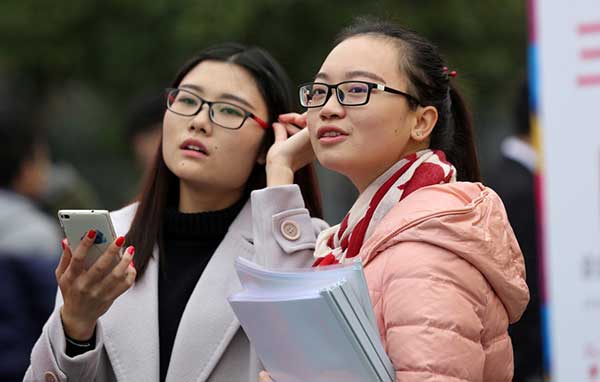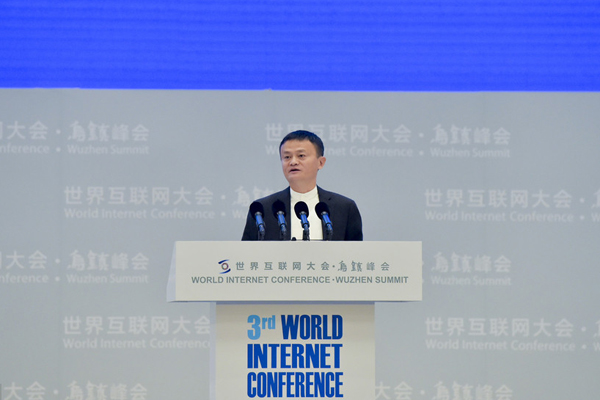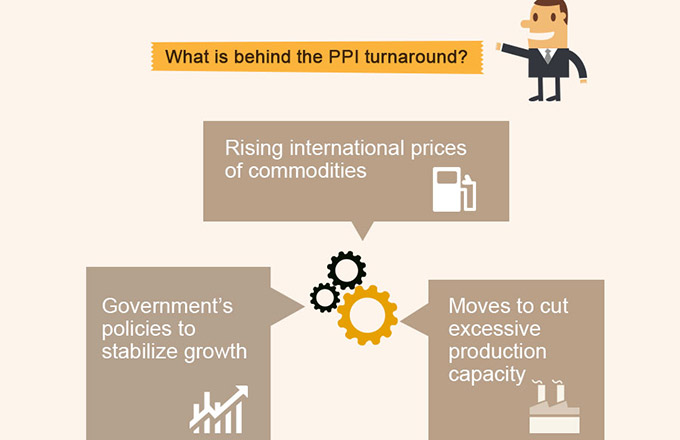China makes headway in SOE reform
BEIJING - The landmark establishment of China Baowu Steel Group in December, the world's second largest steelmaker by annual output, wrapped up a year of bold reorganizations of Chinese state-owned enterprises (SOEs).
Created by the combination of two leading steel mills, the new steel conglomerate is estimated to have a 228,000-strong staff and total assets worth 730 billion yuan ($106 billion).
"The merger is an important move to promote China's economic restructuring and improve the competitiveness of Chinese steelmakers in the international market," Baowu's chairman Ma Guoqiang said.
Baowu represents a new hope for a badly bloated steel sector, which is typical of the country's SOE-dominated heavy industries.
Since the founding of the People's Republic of China in 1949, the government has spared no efforts to support state businesses, especially in steel smelting, coal mining and oil exploration, in a bid to swiftly industrialize a shattered economy.
There are currently 102 non-financial companies administered by the central authorities, with many more under the supervision of local regulators.
Now the world's second largest economy, though plagued by a slowdown, China is pushing for mergers and acquisitions (M&As) of its larger SOEs to enhance efficiency. A 350-billion-yuan national fund was established three months ago to speed up the process.
From power supply to tourism, consolidation in a number of sectors has gathered steam at an unprecedented pace this year. Food giant Sinograin was approved to acquire China National Cotton Reserves Corporation last month, and two building material producers initiated their merger in August.
Peng Huagang, Deputy Secretary General of the State-owned Assets Supervision and Administration Commission, said the number of central SOEs, already markedly down from 196 in 2003, will be reduced further.
"The M&As will accelerate in a variety of forms in the next three years, including stock holding and asset purchase," Peng said.
In fact, the ongoing large-scale restructuring is just part of an ambitious program to push those government-covered businesses to the market.
Although significant in stabilizing GDP growth and employment, the blind expansion of SOEs regardless of a cooling market in recent years compounded nationwide overcapacity and risks of corporate debts.
As the wider economy keeps losing steam, many overstaffed and inefficient SOEs are struggling to keep afloat. The phenomenon is prevalent in the country's northeast economic belt, which suffered the most due to its loss-making "zombie enterprises."
"Most 'zombie enterprises' are state-owned," said Huang Yiping, vice president of the National School of Development at Peking University. "We have to let the market determine their destiny, instead of keeping government and financial support for them."
China published complete guidelines on its SOE reform in September last year, promising to start mixed-ownership pilots, liberalize enclosed industries to private capital, and build modern enterprise systems, in addition to M&As.
Jintong Rubber Company was among the first batch of piloted companies that benefited from the reform measures. The medium-sized SOE in eastern China's Shandong Province posted quick-growing profits after a change in ownership -- 19 management, technical and sales personnel purchased 45.5 percent in capital stock of the hydraulic hose manufacturer.
"Mixed ownership binds the company with its shareholders, who, acting in their own best interests will be more concerned about the firm's growth," said Liu Guangping, general manager of Jintong.
Liu He, deputy head of the National Development and Reform Commission, described the mixed-ownership pilots as an ice breaker for SOE reform, and asked for quicker measures to push SOEs to the market, limit the blind expansion of the public sector and improve efficiency.
He highlighted electricity, crude oil, natural gas, railway, civil aviation, telecom and military industry as key areas.
China's largest oil company Sinopec Group plans to cooperate with private companies in sales of refined oil, while the smaller China National Petroleum Corporation said it will allow private companies to hold no more than a 49 percent of stake in oil exploration businesses.
Around two-thirds of central and provincial SOEs have diversified their ownership, with some even advertising for management, Peng said.
Results of the reform are emerging. Combined SOE profits returned to growth in October after persistent drops since the beginning of the year, the Ministry of Finance said. In the first ten months, SOEs made a combined profit of 1.92 trillion yuan.
But analysts said there is still a long way to go as some sectors remain exclusive and lack competition.
"The reform cannot be done in one kick, but will be a long journey that requires patience," Morgan Stanley Chief China Economist Robin Xing said.























